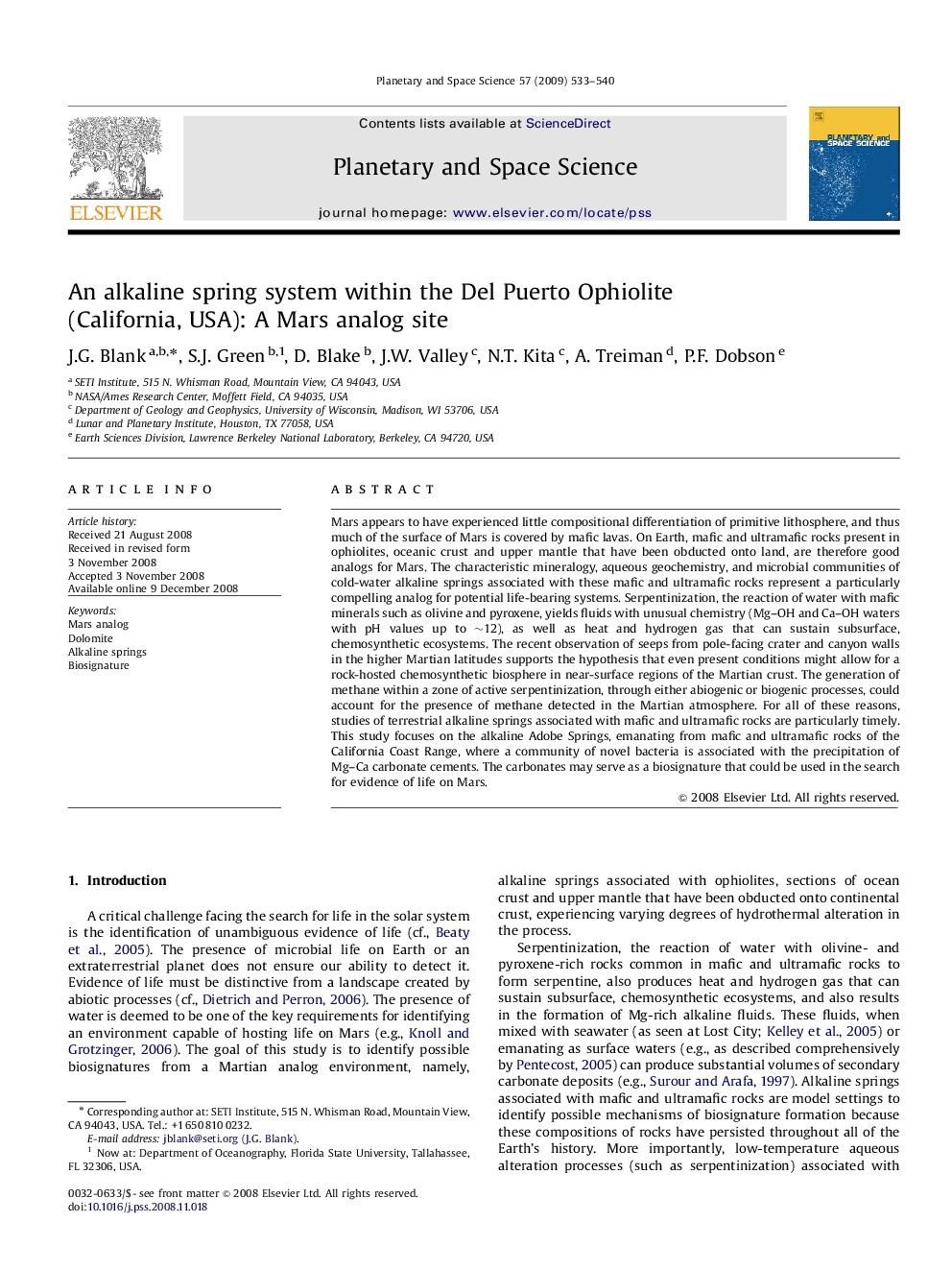| Article ID | Journal | Published Year | Pages | File Type |
|---|---|---|---|---|
| 1782285 | Planetary and Space Science | 2009 | 8 Pages |
Mars appears to have experienced little compositional differentiation of primitive lithosphere, and thus much of the surface of Mars is covered by mafic lavas. On Earth, mafic and ultramafic rocks present in ophiolites, oceanic crust and upper mantle that have been obducted onto land, are therefore good analogs for Mars. The characteristic mineralogy, aqueous geochemistry, and microbial communities of cold-water alkaline springs associated with these mafic and ultramafic rocks represent a particularly compelling analog for potential life-bearing systems. Serpentinization, the reaction of water with mafic minerals such as olivine and pyroxene, yields fluids with unusual chemistry (Mg–OH and Ca–OH waters with pH values up to ∼12), as well as heat and hydrogen gas that can sustain subsurface, chemosynthetic ecosystems. The recent observation of seeps from pole-facing crater and canyon walls in the higher Martian latitudes supports the hypothesis that even present conditions might allow for a rock-hosted chemosynthetic biosphere in near-surface regions of the Martian crust. The generation of methane within a zone of active serpentinization, through either abiogenic or biogenic processes, could account for the presence of methane detected in the Martian atmosphere. For all of these reasons, studies of terrestrial alkaline springs associated with mafic and ultramafic rocks are particularly timely. This study focuses on the alkaline Adobe Springs, emanating from mafic and ultramafic rocks of the California Coast Range, where a community of novel bacteria is associated with the precipitation of Mg–Ca carbonate cements. The carbonates may serve as a biosignature that could be used in the search for evidence of life on Mars.
